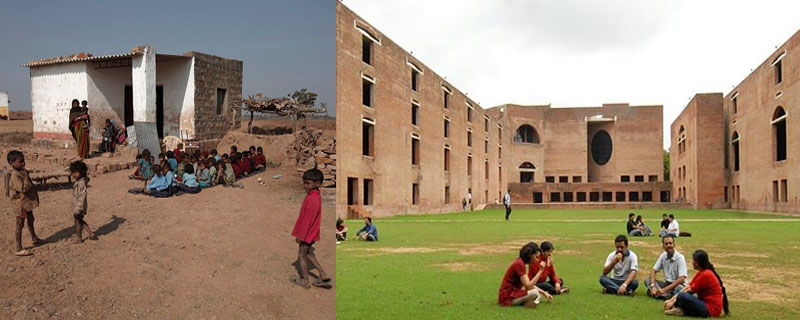Higher Education Financing Agency (HEFA) is a proposal by the Human Resource Development ministry of India whose aim will be funding infrastructure creation for top education institutes like the IITs and IIMs. The government is planning to set aside Rupee 1,000 crore corpus initially which will later be raised to about Rupee 20,000 crore. HEFA is most likely to institutionalize under Section 8 of the Companies Act.
It will be chaired by higher education secretary. Since it is a non-banking financial company, the HEFA CEO will have to be a professional, mostly from financial sector or banking institute. The board will have a mix of donors and institutions chosen on a rotational basis, according to an official. Presently there are 16 IITs and 19 IIMs in the country. According to data available with the government, the gross enrollment ratio (boys and girls) for Class 1-10 was 90.8, which reduces to 84.6 for Class 11 and 12 and a mere 21.1 for higher education.
Approximately around 27 million children and more are enrolled in Class 1 each year, and around 6 million children exited Class 10, either dropping out or failing their exam. Several factors could be referred that have led to such an alarming state; such as need to earn to supplement family income, handling family responsibilities, lack of infrastructure facilities in schools, etc.
Only around 56.8% of schools in India have electricity as per findings of District Information System for Education (DISE) 2014-15 report edition. Apparently only around 1.20% of Children with special needs had been enrolled in formal education for the year 2014-15. The net enrollment ratio when it comes to higher secondary level stood around 32.68%, down from 87.41% in primary education for the year 2014-15.
Even though several researches have been carried out and the government came out with different programs to make sure every child gets educated. Primary education has not yet reached the vulnerable sections of society.
Right to Education (RTE) Act, 2009 enacted to make sure that Children between the age of 6 and 14 receive free compulsory education, but even after 7 years, the act has not been able to make sure each child has been educated. Shortage of funds, teachers, implementation of schemes, etc have been a few of the reasons that led to unsuccessful implementation for RTE.
At a time when primary and basic education has not been properly attended, does it make sense to divert CSR Funds towards infrastructure for higher education instead of focusing on primary education?


